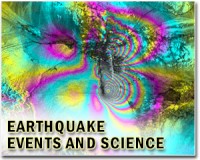| . |  |
. |
Corvallis, Ore. (UPI) Apr 18, 2011 U.S. seismologists studying the earthquake and tsunami disaster in Japan say the temblor caused significant soil "liquefaction" responsible for much damage. The broad geographic extent of the liquefaction over hundreds of miles was surprising to experienced engineers accustomed to seeing earthquake disaster sites, including the recent events in Chile and New Zealand. "We've seen localized examples of soil liquefaction as extreme as this before, but the distance and extent of damage in Japan were unusually severe," said Scott Ashford, a professor of geotechnical engineering at Oregon State University and a member of the research team. "Entire structures were tilted and sinking into the sediments, even while they remained intact," Ashford said. "The shifts in soil destroyed water, sewer and gas pipelines, crippling the utilities and infrastructure these communities need to function. We saw some places that sank as much as 4 feet." Some degree of soil liquefaction, in which saturated soils, particularly sand, gravel or fill, can lose much of their strength and flow during an earthquake, is common in most incidents, an OSU release said. However, the length of the Japanese earthquake -- almost 5 minutes -- may require a reconsideration of the extent of liquefaction damage possible in similar situations, researchers said. "With such a long-lasting earthquake, we saw how structures that might have been OK after 30 seconds just continued to sink and tilt as the shaking continued for several more minutes," Ashford said.
Share This Article With Planet Earth
Related Links Bringing Order To A World Of Disasters When the Earth Quakes A world of storm and tempest
 6.6-magnitude quake hits off New Zealand: USGS
6.6-magnitude quake hits off New Zealand: USGSWellington (AFP) April 19, 2011 A strong 6.6-magnitude undersea earthquake hit off the northeast coast of New Zealand on Tuesday, the US Geological Survey said. The Pacific Tsunami Warning Center issued a local tsunami warning but said there was no threat of a widespread destructive tsunami. The quake struck at 1:03 am (1303 Monday GMT) around 550 kilometres (350 miles) east of Auckland, USGS said, with an epicentre 90 ... read more |
|
| The content herein, unless otherwise known to be public domain, are Copyright 1995-2010 - SpaceDaily. AFP and UPI Wire Stories are copyright Agence France-Presse and United Press International. ESA Portal Reports are copyright European Space Agency. All NASA sourced material is public domain. Additional copyrights may apply in whole or part to other bona fide parties. Advertising does not imply endorsement,agreement or approval of any opinions, statements or information provided by SpaceDaily on any Web page published or hosted by SpaceDaily. Privacy Statement |